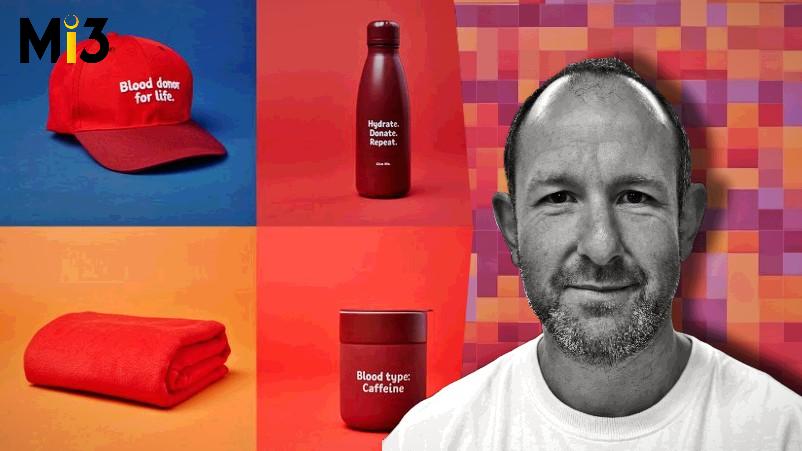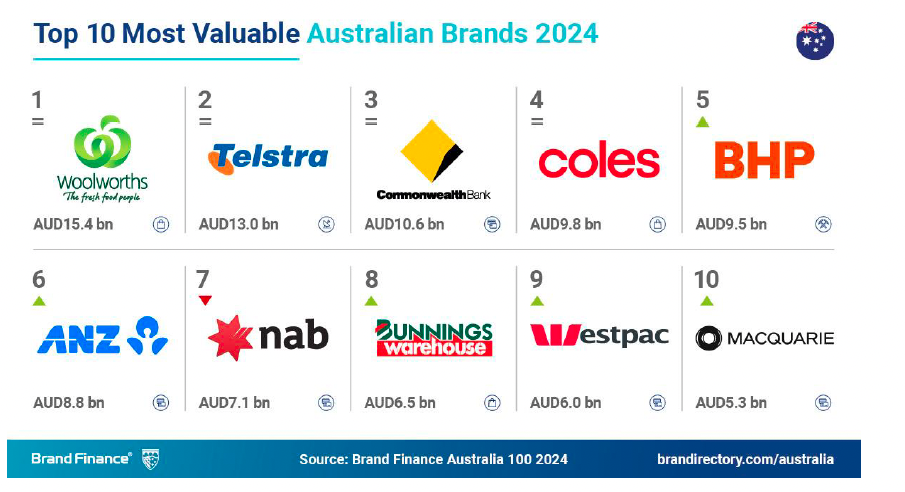Enabling the humble brag: How Australian Red Cross Lifeblood navigated regulatory and safety hurdles to mobilise a 130,000-strong donor advocacy army – and found loyalty trumped digital spend

What you need to know:
- Australian Red Cross Lifeblood has debuted a first-of-its-kind loyalty program designed to encourage the four in 10 first-time donors to return, while also inspiring regulars to make a third donation each year and reinvigorate lapsed consumers.
- With a 40 per cent churn rate across its 550,000 donor base, building a retention program was vital to CMO, Jeremy Weiss, and he secured incremental budget to be able to do it.
- Already 130,000 participants strong, the merch-based offering isn’t just about recognising loyalty but also mobilising an advocacy base to encourage more Australians to donate blood.
- Loyalty is just one in a number of programs the commercially minded marketer is realising at the Lifeblood agency improving marketing’s return on investment as it works to meet a 5 per cent year-on-year increase in blood supply demand in Australia.
- Last week, Lifeblood also launched a new campaign with Channel Seven which sees realtime blood supply levels per state and across blood types integrated into the evening news in the style of the weather report.
Blood, sweat, tiers
Launching Australian Red Cross Lifeblood’s Gifts loyalty program was a very deliberate attempt at engaging and retaining existing blood donors to reduce an average 40 per cent churn rate and reactivate the lapsed base, says Weiss.
As demand for blood and blood products grows north of 5 per cent per year, the marketing leader’s job is to attract, engage and retain donors to meet supply needs. And with such a chunk of the active base dropping out every year against a 20,000-person acquisition rate, there was no doubt in Weiss’ mind he needed to tackle “the leaky bucket” and both reactivate as well as increase frequency of donations.
In his former days at Origin Energy, Latitude and Telstra, Weiss learned the power of customer loyalty and advocacy. He’s also one of those commercial marketers who knows retaining a customer is seven times less expensive on average than acquiring a new one – even as he agrees it’s not easy to secure budget to invest in longstanding customers. It’s these learnings he’s now applying at Australian Red Cross Lifeblood, the government-funded agency responsible for collection of blood and blood products nationally.
“We operate a bit like a double-sided marketplace: Demand is driven by hospitals and the pharmaceutical firms,” Weiss tells Mi3. “Marketing’s role is to stimulate supply, because we need our donors to come in and donate blood and plasma. Then that becomes the raw material that gets processed and goes back into the recipient.”
The agency’s core blood donor panel comprises about 550,000 active donors donating at least once in the last 12 months. About 105,000 new donors come in every year, while 130,000 dormant donors come back. A further 220,000 drop out annually.
“The problem to solve is how you fill those holes to stop more people dropping out. But equally, if they’ve dropped out, you know they’ve overcome the barriers that got them to donate for the first time,” Weiss says.
The first aim of Lifeblood Gifts is recognising donors and saying thank you. The second aim is getting frequency and donor reactivation figures up. The third is to mobilise donors as an advocacy army to encourage others. To do this, Australian Red Cross Lifeblood trialled and has now launched a merch-based loyalty program, offering up initially five branded items that also ensure consumers are “walking billboards” for blood donating, Weiss says.
“Everyone would agree the notion of donation is worthy and most think it’s the right thing to do. But the maths doesn’t add up. One in three people will need blood or blood products in their life, but only about one in 30 donate each year. Arming the active base as advocates that can provoke conversation is really important for us,” he says.
But in doing so, what Weiss and the team had to consider was the psyche of donors. “Most donors do it and feel good about doing it, but it’s quite a personal choice. Notionally, donors don’t like to brag. What we had to do was explore how we enabled the humble brag,” he says.
“Allowing them to wear branded merch is a way of demonstrating values without saying ‘Hey look at me, I’m amazing. I’m a blood donor’. It’s this silent way they can demonstrate their values. But selfishly for us, it is advocacy in action. Rather than just a survey score of 89, which is great, it’s about how we mobilise that army in a meaningful way.”
The tension and conversations I have with the CFO is that it costs us less to get more out of existing donors, but every time we are short, we can't just keep going back to those same donors because pretty soon they're going to unsubscribe. What we need to think about is what is the right combination of growing the donor panel with the frequency of their donations. That's the balancing act.
Safety guardrails
Herein lies an important idiosyncrasy of working in the health space Weiss has had to navigate to realise his loyalty plan. Australian Red Cross Lifeblood subscribes to the voluntary, non-remuneration guidelines for blood donation. This means it can’t pay people or unreasonably incentivise them to donate.
“There have been a lot of regulatory hurdles towards a program like this because the perception is if you reward someone, they will be more likely to answer incorrectly on the questionnaire, which is designed as a safeguard to make you ineligible if for example, you’ve recently travelled to a malaria risk country,” Weiss explains. “Because safety and security of the blood supply is paramount, there is a perceived risk people will answer incorrectly just so they can get a benefit. That’s why we haven’t really been able to do anything like this before.
“Before we could establish a loyalty program, we had to demonstrate it wasn’t a rewards program, but more of a recognition and thank you. The monetary value had to be such it was reasonable to offset the person’s time, but couldn’t be easily exchanged for money.”
Critical was establishing guard rails the agency feels comfortable don’t exceed reasonable tolerance in terms of allowance. “There are different ways we can think about that. The value of a gift for any one donation should not exceed a value that’s quite tokenistic, but there’s no absolute dollar value on that one,” Weiss says. “But you then go, well, based on three donations to get a gift, does that feel tokenistic or a goodwill gesture?
“One of the other things we think about as well is how we might introduce either a game of chance – donate over this time period and go to the draw for something. The opportunity is to demonstrate if you’re going in for a chance to win and that chance is less than one in 100, it’s unreasonable to think someone is actively donating particularly for the incentive.”
Having won approval for the loyalty program, Australian Red Cross Lifeblood commenced a nine-month pilot in 2023 with intent to attract 2,000 people. The trial, “held together with band-aids and a lot of manual process that was never intended to do anything more than prove the program out”, scaled beyond 90,000.
“People say they don’t do it for the benefit. But clearly, when you offer them a benefit, they’re happy to take it. What we’ve done is taken a lot of the learnings from that pilot for the full-scale launch,” Weiss says.
For example, having started with distinct programs for blood and plasma, as well as different frequency hurdles for merch, the official Lifeblood Gifts program is streamlined into one simple program: With every third donation, a donor qualifies for a gift of their choosing. On offer are beanies, coffee cups, water bottles, caps and blankets.
“Number three is a magic number for us because 62 per cent of our active base donates once or twice a year,” Weiss says. “If we can shift more distribution from the ones and twos to three, we’re building a habit. From an efficiency perspective, the performance of the donor gets better, their time in centre reduces, and the collection quality improves the more regular they are.”
The big surprise in merch choice so far is the blanket – even in Queensland. Limited-time merch is also coming including a green and gold tote bag aligning a certain large sporting event coming up in Paris.
“We think green and gold will have some special meaning and we’d like to celebrate the Aussie champions that roll their sleeves up every day,” Weiss says.
All items adorn slogans, such as ‘blood type equals caffeine’, or ‘hydrate donate repeat’. “We try and be a little playful with the brand tone of voice. It helps to facilitate the conversation and that humble brag,” says Weiss. “We’ve also got great ideas around what might be next to drop in. For example a dog leash, which would benefit us in terms of exposure but also ties into associated health benefits as we think about our role in being essential to health in Australia. Getting people out walking their pets feels quite authentic.”
Australian Red Cross Lifeblood has automated and integrated processes into its Donor Connect platform, which uses Oracle’s CRM, to take manual handling away from the frontline. Consolidating two product-specific programs to one was also important given supply variance.
“Sometimes we will ask donors who have been booked to donate blood when plasma is short to donate plasma, and vice versa. If they’re in one of the programs and you’re asking them to switch penalises them. So we’ve simplified it,” Weiss says.
Then there’s the corporate opportunity. Australian Red Cross Lifeblood has relationships with all bluechip brands in Australia.
“We are quite appealing to these brands for both the brand halo, but also how we might provide access to a highly engaged and unique group of Australians that are nationally represented,” Weiss comments. “How we might be able to partner with some Australian brands to recognise and reward donors by giving them access to benefits because they are a donor is also on the roadmap for us.”
Needle moving
Within the pilot, Weiss’ team saw 79.3 per cent of participating first-time donors come back, up from an average of 60 per cent – with the caveat the pilot wasn’t necessarily measured against a strict control group. Lapsed donors are also four times more likely to reactivate or consider reactivating compared to the control group.
Since officially launching three weeks ago, Australian Red Cross Lifeblood has added 40,000 members to the program and is now sitting at 130,000 with a target of 170,000 by end of financial year.
“What we expect is it will help deliver an overall 5 per cent uplift in our collections overall,” Weiss says.
While loyalty spend is incremental and ring-fenced to support the assumptions made in the Lifeblood Gifts’ business case, Weiss says as a commercially minded marketer he “absolutely reserves the right to put the money where it will be most effective”.
“The tension and conversations I have with the CFO is that it costs us less to get more out of existing donors, but every time we are short, we can’t just keep going back to those same donors because pretty soon they’re going to unsubscribe. What we need to think about is what is the right combination of growing the donor panel with the frequency of their donations. That’s the balancing act,” he says.
Blood, money
Loyalty is an example of a commercial and consumer-oriented mindset coming into Australian Red Cross Lifeblood. The transformation is being spearheaded by CEO, Stephen Cornelissen, who joined in 2022 and brought a different lens that’s “braver and bolder”, according to Weiss.
“Stephen brought in new strategy, purpose and values, then people like me from the commercial sector to say it’s time to think about this more like a business,” he says. “We are an incredibly well funded, very large operation, with 3,500 people, and we have to deliver 1.7 million collections a year. So he’s said, let’s run this really responsibly, efficiently, but we need to grow and Jeremy, you need to maximise your return on marketing investment.
“I’m really lucky, I’ve got a decent budget. I want to spend that budget to maximise my return on investment. Whether I’m working for Lifeblood or Origin doesn’t matter. But sometimes there are perceptions in this place that people should just come to us because we are who we are. Or that every cent we spend should be for the purpose of the donation. I get that… but if you think about my investment not as a donation from the Government but as an investment, I know every incremental collection I think the gifts program is going to deliver will be half the cost of an incremental collection I get from a typical paid digital channel.
“If I’m doing my job well, why wouldn’t I spend money to reward an existing donor, which is why loyalty programs exist?”
Yet Weiss hasn’t lost sight of the acquisition pipeline. He describes his role as a combination of acquisition and retention that ensures the agency’s network of 100 fixed and mobile donor sectors are consistently optimised and delivering both the right experiences to donors and staff, and a constant supply of blood.
Driving momentum is a campaign launched last October with former Olympics swimming champion, Michael Klim, as brand ambassador. Klim has been a recipient of blood plasma treatments that helped bring back his quality of life.
“That’s an incredibly strong performing campaign and platform for us that’s allowed us to cut through,” says Weiss. Klim has contributed to an overall 7 percentage page increase in non-donor brand awareness, 6pp increase in non-donor plasma awareness and 4pp improvement in brand trust. Intention to donate is also 7pp higher for those who have seen the Klim campaign vs those that haven’t.
Winter soldiers
Another first for Lifeblood is a new partnership with Channel Seven on a blood supply update integrated into the evening news from 6pm, much like a weather report. Commencing in June, the blood supply report looks at state-by-state supply as well as against the types of blood in the bank, as well as if there’s a greater need for blood or plasma. The campaign is running over the next few months and takes information from a new real-time blood supply level ranking on the agency’s website.
“It’s a really important winter driver, at a brand layer, recruitment layer as well as a mobilising existing donor,” says Weiss. “Like the bushfire alert rating, this is about making the blood supply during winter more front of mind for people.
“A lot of what we do in the acquisition and lower funnel space is directly attributable. We recognise this is a great opportunity but exactly what it does at the brand layer for new donors and for existing donors is a bit of guesswork. How we’ve set ourselves up to measure performance is from a leading indicator perspective as well as a conversion perspective, as well as frequency of existing; we’ve set it up with what we would like to see. We’re super curious to see how it goes.”





